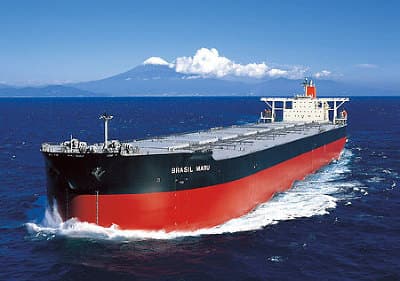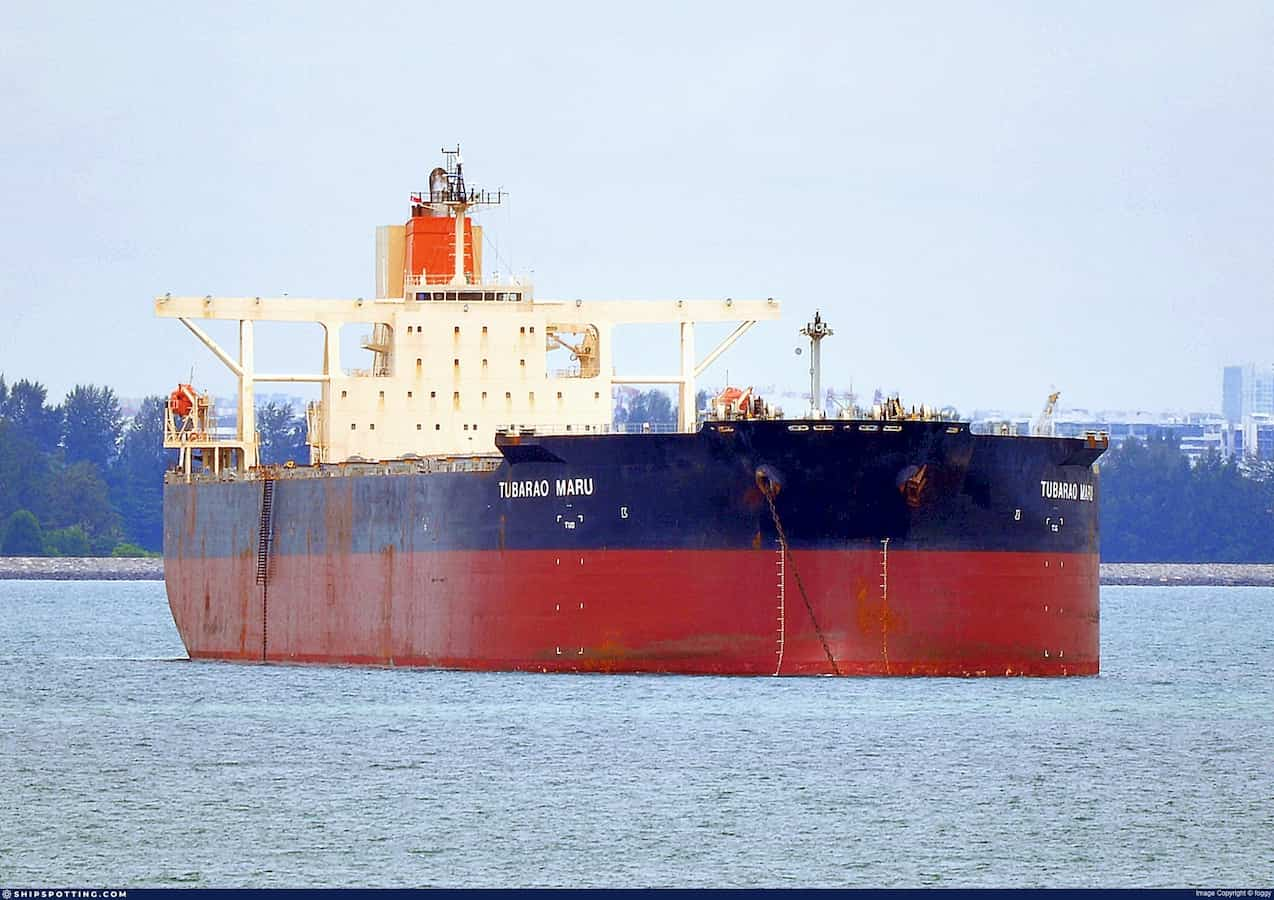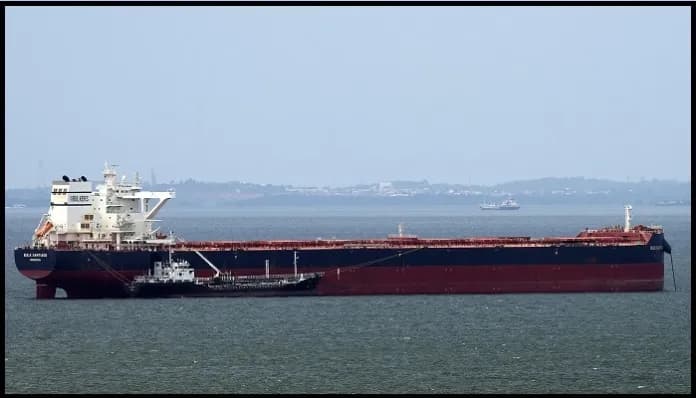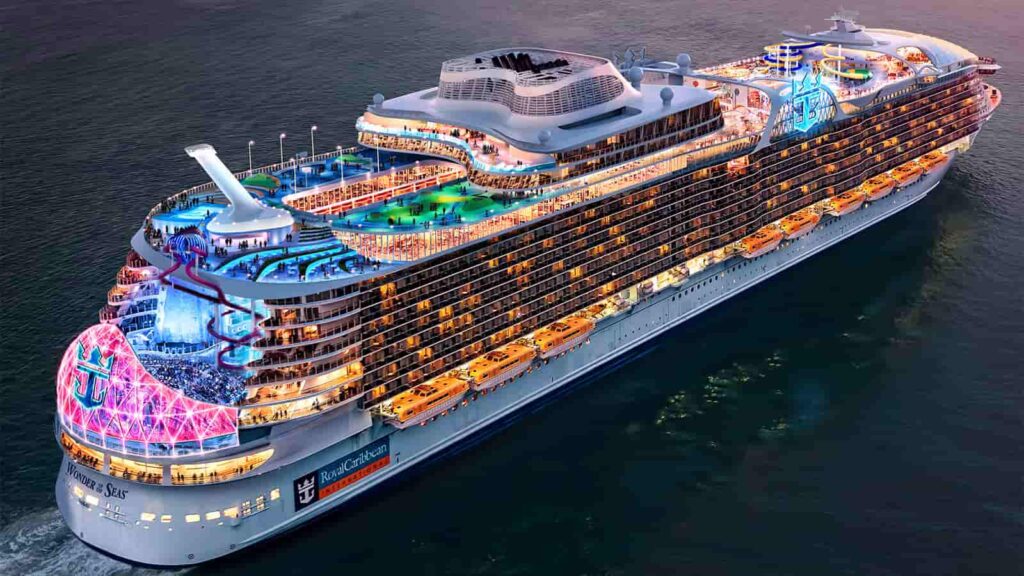Bulk Carrier: Designed to transport loose bulk cargo such as grains, cereals, coal, ores, iron, steel, cement, etc., bulk carriers are maritime vessels. The majority of bulkers registered in Panama make up 21% of the world’s maritime fleet today. With its shipyards producing 80% of the Very Large Ore Carriers, South Korea is a significant producer of bulk carriers.
Ships that carry bulk have varying features and specs. While the goods are being loaded, some even provide packaging services and have their unloading machinery. However, they differ in size; the smallest are called mini-bulk carriers and have a 10,000 DWT capacity, while the largest class of bulk carriers is called VLOC and has a deadweight of over 300,000 tonnes. It is primarily used to ship iron.
The five largest bulk carriers in the world are listed below with their outstanding qualities.
Top 5 Bulk carrier Ships
1. MS Ore Brasil

The largest mining firm and provider of logistics services in Brazil, Vale SA, ordered the MS Ore Brasil, a Valemax Class ship, in 2009. Ore Brasil, which was built by South Korean company Daewoo Shipbuilding and Marine Engineering, went into service in 2011 and is now registered in the port of Singapore but sails under the flag of Hong Kong.
Formerly called Vale Brasil, it surpassed the Norwegian ore carrier MS Berge Stahl to become the world’s largest bulk carrier. It was built to transport iron ore from Brazil to ports in Europe and Asia, particularly China.
The MS Ore Brasil is the longest maritime vessel, measuring 362 meters in length and 65 meters in width. The depth of its hull is 30.4 meters. It has seven cargo compartments, each with a volume comparable to a small-sized Panamax ship, and a gross tonnage of 198,990 tons. With a gross volume of approximately 219980 m3, it is loaded at a pace of 13,500 tonnes per hour using a ship-loader.
Fishing Vessels: Boats and Ships for Catching Fish in Lakes, Seas, and Rivers
Det Norske Veritas has classified it as a Very Large Ore Carrier. Its net tonnage is 67,993 tonnes, and its deadweight is 402347 tonnes. MS Ore Brasil has a draft of 23 meters, or more than 11,100 vehicles, when completely loaded with iron ore. Due to her size, she is not allowed to enter most ports and can only be accommodated in the largest harbors. It can accommodate 35 crew members and cruise at an average speed of 15.4 knots.
With a fixed pitch propeller and a MAN B&W 7S80ME-C8 two-stroke diesel engine, it is equipped with a cutting-edge carbon-reduction technology that lowers greenhouse gas emissions by 35% when compared to previous ships in its class. It was awarded the Clean Ship award at the 2011 Norwegian Shipping Exhibition for demonstrating long-distance efficiency.
2. MS Berge Stahl

When MS Ore Brasil entered service in 2011, it surpassed MS Berge Stahl, which was built by Hyundai Heavy Industries in 1986, as the largest iron ore carrier in the world in terms of both gross and deadweight tonnage. Her current port of registry is Douglas, Isle of Man; earlier registrations were made at Monrovia, Liberia, and Stavanger, Norway.
The largest gas shipping corporation in the world, Bergesen Worldwide Gas ASA, ran Berge Stahl from 1986 to 2008. It has been owned and run by Berge Bulk, an independent dry bulk owner with over 80 ships and carriers, based in Singapore, since 2012.
She is the second-biggest bulk carrier, measuring 342.8 m in length, 63.5 m in width, and 23 m in draft. With a 9-meter propeller and a MAN B&W 7L90MCE diesel engine, she can propel herself with a deadweight of 364,767 tonnes and 27,609 horsepower. Its gross tonnage is 175720 tonnes, and its top sailing speed is 13.5 knots per hour, or 25 kilometers per hour.
When fully loaded, Berge Stahl can only fit through two ports due to her enormous size. First, iron ore was transported to the port of Rotterdam, Netherlands, from the Terminal Marítimo de Ponta da Madeira, Brazil. It may reach Europoort and the recently constructed bulk terminal at Caofeidian, China, during high tides. If the ship is not completely laden, it can moor at other ports in Europe. The carrier was maintained and repaired in a Portuguese drydock in 2014.
3. Brasil Maru

Brasil Maru was built in 2007 by Mitsui Engineering and Shipbuilding Co. Ltd in the Chiba shipyard in Ichihara, Japan, and was designed as a bulk ore carrier by Nippon Kaiji Kyokai. A trailblazing vessel, it drastically lowered the cost of transporting iron. Since large-scale carriers of her size had never been built in Japan at that time, her completion was a moment of victory. Equipped with the most recent technology for ultrasonic impact treatment welding, which successfully addressed metal fatigue, it was awarded the Ship of the Year Award in 2007.
Nippon Steel Corporation placed the order in order to satisfy the expanding demands of the Japanese steel manufacturing sectors. It transported iron ore from Brazil to Japan, bolstering the country’s manufacturing industry, with a deadweight of 327,017 tons. It is currently owned by Tamou Lines SA and operated by renowned Japanese shipping company Doun Kisen, operating under the Panamanian flag.
Q-Max Ships: Qatar Gas Consortium’s Largest LNG Carriers with Unique Design
The dimensions of Brasil Maru are 340 m long, 60 m wide, and 28.15 m deep. It has a gross tonnage of 160774 tonnes and a carrying capacity of 327,180 tonnes of iron ore. An MITSUI-MAN B&W Diesel Engine 7S80MC-C 1, which produces 23,645 kW of power at 66 rpm, powers the Basil Maru. Its average sailing speed is 15 knots, with a maximum speed of 17.5 knots.
The bulk carrier, registered in Panama, is built with exceptional stability and maneuverability in mind. When compared to other bulk carriers of the same size, it uses less fuel. The IMO requirements are even met by its generator and primary engines. Its propeller and distinctive hull provide maximum performance. The ship can dock at ports in Australia and Brazil with ease thanks to its mooring system. When not completely laden, it can fit in most harbors.
Equipped with a double-hulled fuel tank and an automatic oil supply system, the carrier emits twenty percent less carbon dioxide than her peers.
It has a large amount of lifesaving and safety gear on board, and it can accommodate 30 crew members. The Brasil Maru has a 10-seater rescue boat and three lifeboats that can each hold twenty people.
4. Tubarao Maru

Similar to her sister ship Brasil Maru, Mitsui Engineering and Shipbuilding Co Ltd built Tubarao Maru in 2008. The ore carrier, owned by G.O.D Shipping SA, is operated by the esteemed Doun Kisen Corporation and is registered and sailing under the Panamanian flag. Her deadweight is 326,964 tonnes, and her gross tonnage is 161294 tonnes. She has a 340-meter overall length, a 60-meter beam, and a 21.17-meter summer draft. Her average cruising speed is 13 knots, with a top speed of 15 knots.
200,867 tonnes of iron ore can be carried on board with ease. She also has four liferafts, a rescue boat, and three lifeboats. Its main engine, a 1DE: 2 SA 7 CY, has a 23,640 kW peak output at 66 rpm. Four generators are linked to a single shaft.
5. Stellar Queen

NKK Shipbuilding in Yokohama, Japan, constructed Stellar Queen, the fifth-largest bulk carrier in the world, in 1994. The ship, which was once known by several names, including Ore Yantai, Ore Goro, and Hydra Star, is currently based in Majuro and is sailing under the Marshall Islands flag.
Having a length of 331.5 meters and a width of 58 meters, it can transport 305,846 DWT. Her average cruising speed is 8.4 knots, while her maximum sailing speed is 10 knots. She has a Sulzer-type engine and a gross tonnage of 162,393 tons.
It is managed by MSI Management, Singapore, and owned by Seoul, South Korea-based Polaris Shipping. In addition to Stellar Queen, three bulk carriers with the same size are owned by Polaris Shipping. All of them, though, were constructed in 2015, and their carrying capacity is marginally lower.
Before being transformed into a bulk carrier, Stellar Queen was a Very Large Crude Carrier. In 2017, two fissures surfaced in the main deck area while the ship was sailing to the Brazilian town of Itaqui. When the Polaris VLOC Stellar Daisy was transporting 260,000 tonnes of iron ore from Brazil to China in 2017, it sank due to similar structural problems. Out of the twenty-four crew members, just two were saved prior to the ship sinking in the South Atlantic.
Because of the technical flaws in its outdated VLOCs, the mining corporation Vale in Brazil chose to modify its agreements with Polaris Shipping, as stated in a news release from 2020.


